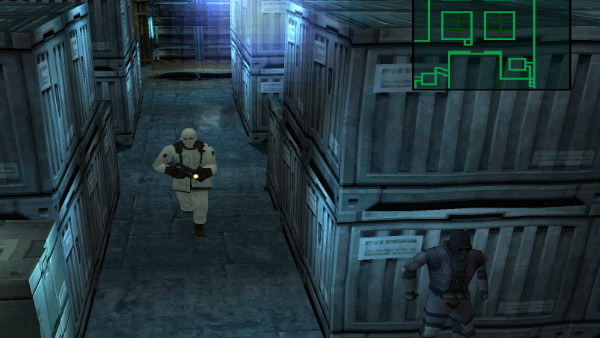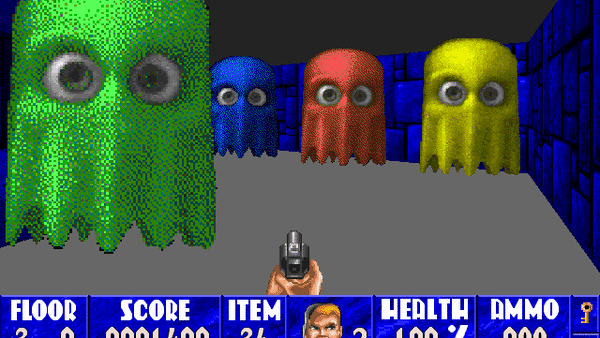How Pac-Man Is The Most Influential Game Of All Time
2. Direct Influences

While Pac-Man was certainly influential in a more abstract way that influenced the general approach to game design, it also directly impacted some of the biggest titles in the industry. John Romero, the key creative on Id Software's Wolfenstein 3D and Doom, has gone on record multiple times to explain how the simplistic game design of Pac-Man acted as the basis of those revolutionary shooters.
Though obviously positioned from two completely different perspectives, the layout of those labyrinthine shooters, scattered with hidden collectibles and power-ups, were based partly on the different stages in Pac-Man. Though you could argue they're completely different games, the idea of becoming familiar with a level, and knowing the best way to traverse it, is key to succeeded in both titles. That's the foundation of each game, and the systems added on top of that - be it shooting demons or keeping one step ahead of Inky and Blinky - would fall apart without it.

The complexity yet accessibility of these systems has also been cited as setting the groundwork for the stealth genre, in particular the Metal Gear games. Metal Gear Solid in particular, despite being a technical revolution and one of the first cinematic 3D releases, boasted a gameplay style that wasn't actually all that different from Pac-Man. Most of the game can be played by looking at the 2D, top-down mini-map rather than the actual player-space, which awards you with far greater tactical awareness and the lay of the land, evoking Pac-Man's visually-simplistic layout.
Likewise, Pac-Man was the first game to really expand what video games could be. Before it, the most popular genres - hell, the only genres - were shooters and racers that didn't really have defining spaces or characters. There were some releases experimenting with new ideas, such as rich RPG text adventures such as Colossal Cave Adventure, but even they were limited, confined to the privilege of expensive home computers and away from easily-accessible arcades. Pac-Man, on the other hand, boasted everything, while at the same time teasing the future of games as a storytelling medium by introducing early versions of animated cutscenes.
Despite its limitations, Pac-Man was one of the first titles to have a personality, attempting to build character and even deliver a rudimentary "story" that, without dialogue, created compelling characters and mascots players could attach themselves to. These short cut-scenes, then, not only delivered essential information on gameplay mechanics in a nonverbal way, but allowed basic sprites to have distinct personalities, engaging with a player in a completely different way than any arcade game before it.